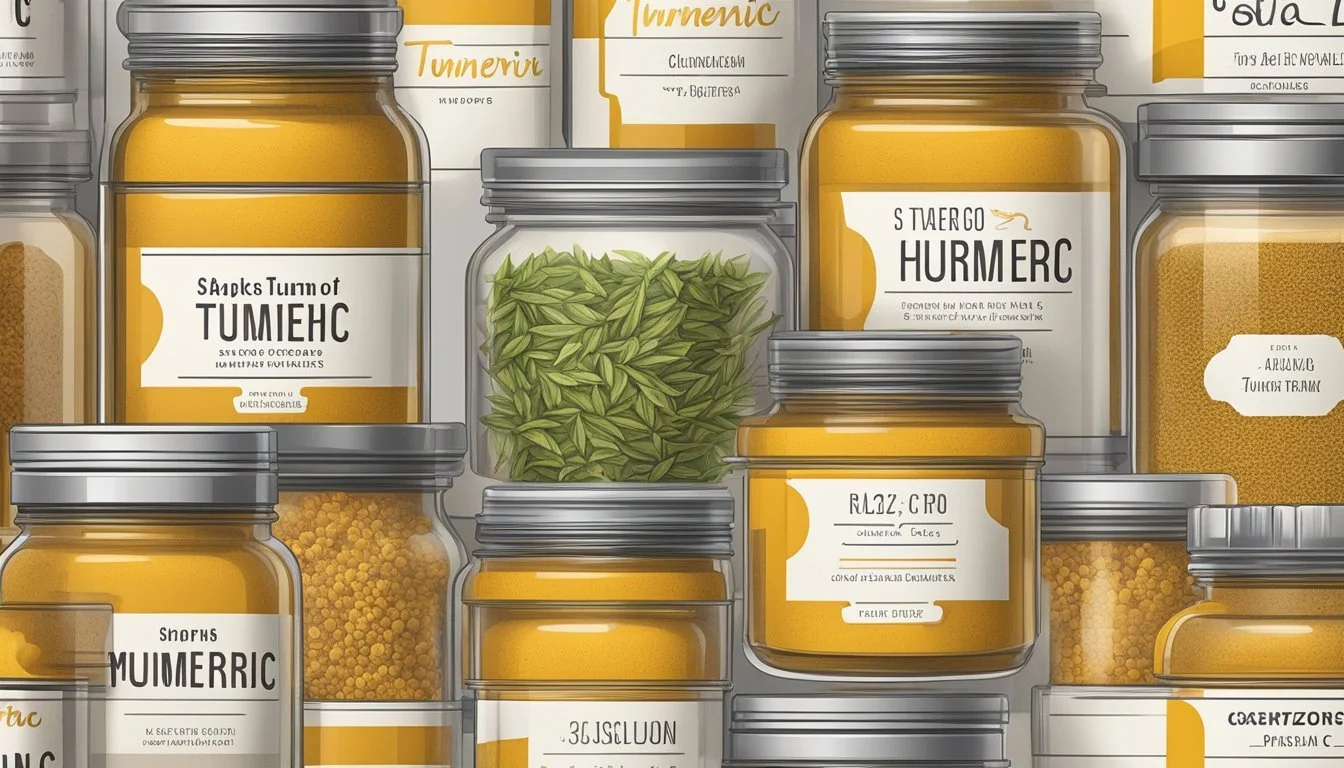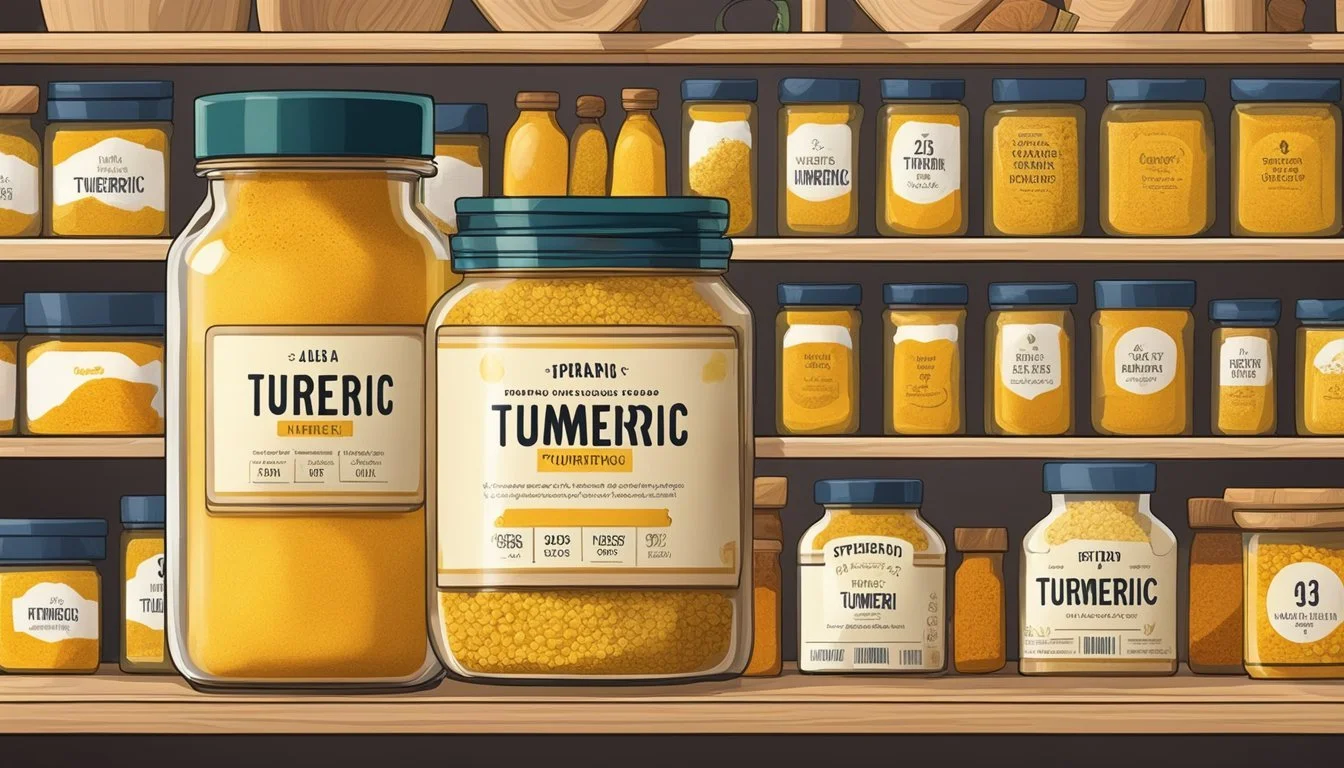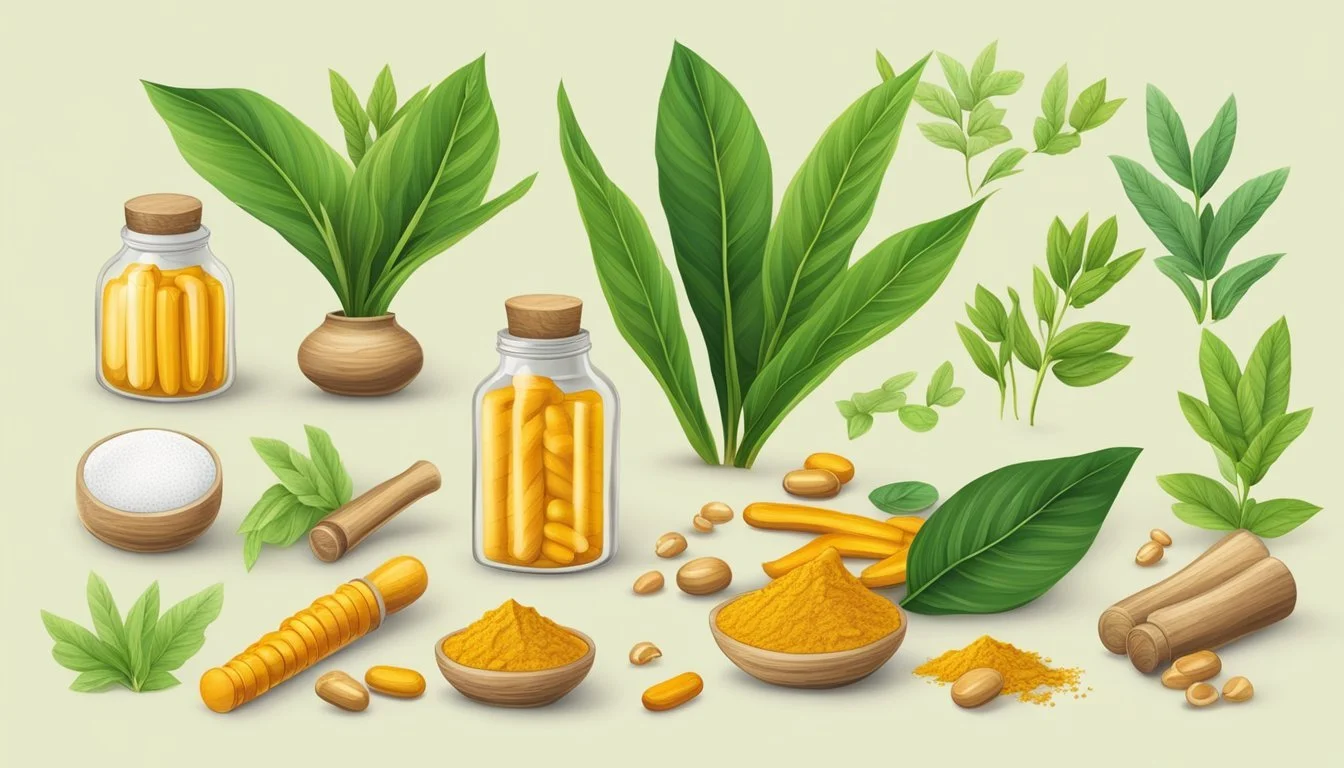How Long Does Turmeric Powder Last?
Understanding Shelf Life and Storage Tips
Turmeric powder, derived from the dried root of the Curcuma longa plant, is a staple spice in many kitchens, known for its vivid color and distinctive flavor. The shelf life of turmeric powder is notably long, lasting up to two to three years when stored under appropriate conditions. This longevity is a result of the spice's low moisture content and the presence of curcumin, which plays a role in extending the shelf life.
From a quality standpoint, while turmeric powder maintains its safety for consumption beyond its suggested use-by date, the potency of its flavor and the vibrancy of its color can diminish over time. Therefore, for achieving the best culinary results, it is advisable to use turmeric powder within one year of purchase.
Proper storage conditions play a critical role in preserving turmeric's quality. The spice should be kept in a tightly sealed container, shielded from light, heat, and moisture, which can accelerate the deterioration of its flavor and color. Ensuring the container is thoroughly dried before storage and using a dry spoon to measure the spice can help maintain its longevity.
Understanding Turmeric
Turmeric is a spice heralded not only for its distinct flavor and color but also for its compounds which contribute to a range of health benefits. It is derived from the root of the Curcuma longa plant and has been an integral part of culinary traditions and medicinal practices, particularly in Asia.
Turmeric Varieties
Turmeric comes in two primary forms: fresh turmeric and turmeric powder. Fresh turmeric is the raw root of the Curcuma longa plant, similar in appearance to ginger root, with a bright orange to yellow flesh. Turmeric powder, on the other hand, is the dried and ground form of the root and is known for its vibrant golden-yellow color. It's commonly used as a seasoning in cooking, offering a warm, bitter taste.
Compounds in Turmeric
The key compounds in turmeric that have garnered attention are curcuminoids. The most noteworthy curcuminoid is curcumin, which constitutes approximately 2-8% of most turmeric preparations and imparts the characteristic yellow color. It's responsible for many of the spice's anti-inflammatory and antioxidant properties. However, curcumin's bioavailability is relatively low, so it is often combined with other substances, such as black pepper, to enhance absorption.
Health Benefits of Turmeric
Research has identified a number of health benefits associated with turmeric. Most notably, curcumin is a potent anti-inflammatory agent, which may help manage conditions like arthritis. It is also an antioxidant, protecting cells from damage. These effects may contribute to turmeric's potential role in supporting cardiovascular health, improving symptoms of depression and anxiety, and aiding in metabolic syndrome mitigation. While these benefits highlight turmeric's therapeutic potential, it is important to approach its use with practical expectations and in coordination with other treatments.
In culinary contexts and consumption, turmeric is safe and beneficial when used as a spice. However, as in any case with dietary supplements or herbal remedies, it's advisable to consult with a healthcare provider before starting any regimen, especially for those with health conditions or those taking prescribed medications.
Shelf Life Factors
The shelf life of turmeric powder is influenced by several factors, including its exposure to air, moisture, light, and heat. These factors can significantly impact the potency, quality, color, and flavor of both fresh and ground turmeric.
Impact of Air and Moisture
Exposure to air and moisture can negatively affect turmeric powder. Air can oxidize the active compounds, diminishing the potency and altering the color. Moisture encourages the growth of mold and bacteria, which could lead to spoilage.
Air: Sealed packaging or containers reduce exposure, preserving quality and extending shelf life.
Moisture: Dry storage areas and the use of a dry spoon prevent moisture contact, crucial for maintaining freshness.
Effect of Light and Heat
Turmeric powder's quality is susceptible to deterioration when subjected to light and heat. These elements can degrade the vibrancy of the spice and weaken its distinct flavor profile.
Light: Storing in a dark place prevents the bleaching of color and preservation of quality.
Heat: A cool environment ensures that the flavor compounds remain intact, avoiding loss of flavor.
Fresh vs Ground Turmeric Shelf Life
Fresh turmeric and ground turmeric have differing shelf lives. Fresh turmeric typically lasts a few weeks when refrigerated, while ground turmeric can last up to three years if stored properly.
Fresh Turmeric: Shorter shelf life, requires refrigeration, and is best used when fresh.
Ground Turmeric: Longer shelf life due to the removal of moisture; optimal storage extends its usability.
Storage Solutions
Proper storage measures are crucial to ensure that turmeric powder retains its quality and potency for an extended period. The following subsections outline the optimal storage conditions and the best types of containers and packaging to use.
Optimal Storage Conditions
Turmeric powder should be stored in a cool, dry place, away from direct sunlight. Exposure to heat, light, and moisture can degrade the quality of turmeric, so finding a dark and cool location, such as a pantry or cupboard, is ideal. Consistent temperatures and low humidity will help preserve the spice's vibrant color and flavor for the full extent of its shelf life, typically 2-3 years.
Refrigeration and Freezing
Storing turmeric powder in the refrigerator is not recommended as it may introduce moisture, which could lead to spoilage. If one chooses to use the freezer for long-term storage, placing the turmeric powder in a freezer bag or reusable airtight container is essential to prevent moisture and freezer burn. However, frequent temperature changes from opening and closing the freezer may still negatively affect the quality.
Containers and Packaging
The best storage containers for turmeric powder are airtight containers made of glass or food-grade plastic. Using transparent containers should be avoided unless storing them in dark places. Alternatively, one may utilize resealable plastic bags as long as all the air is squeezed out before sealing. For bulk storage, one might consider portioning the turmeric powder into smaller quantities, so frequent access does not compromise the entire supply.
Identifying Spoilage
When turmeric powder begins to spoil, changes in appearance, aroma, and the presence of mold are telltale indicators. It is important to recognize these signs to ensure the quality and safety of the spice.
Appearance and Aroma Changes
Appearance: Fresh turmeric powder is known for its vibrant golden-yellow color. Over time, exposure to light, heat, or improper storage can cause the color to fade. A loss of color intensity might suggest a decrease in the spice's potency.
Aroma: Turmeric's distinct, earthy scent can significantly diminish when the spice starts to degrade. If the aroma is noticeably weaker or has an off-smell, this is a sign that the powder may no longer be at its peak quality.
Mold and Contamination
Mold: Any visible signs of mold growth, which may manifest as dark or green spots, indicate contamination and spoilage. Moisture is a primary culprit for mold growth in spices.
Contamination: The use of a wet spoon or contact with water can introduce moisture into the container, increasing the risk of contamination. Once the presence of mold or other forms of contamination is detected, the turmeric powder should no longer be consumed.
Maximizing Turmeric Usage
To get the most out of turmeric powder, one should consider its multifaceted applications in cooking, skincare, and as a health supplement. Each use harnesses turmeric's unique properties, from its rich taste and aroma in dishes to its potential benefits for skin health and immune support.
Culinary Uses of Turmeric
Turmeric's warm, bitter taste and aromatic qualities make it a staple in Asian cuisine, especially in curries. It imparts a vibrant color and subtle flavor to culinary creations. To preserve these attributes, it is essential to:
Store correctly: Keep in a cool, dark place inside an airtight container.
Consume properly: Use turmeric within a year of purchase for maximum flavor.
Turmeric in Skincare
Turmeric contains bioactive compounds beneficial for skincare, often found in skincare products such as masks and creams. It may help to:
Enhance skin's appearance: Applying turmeric-infused products can possibly improve skin radiance.
Incorporate in routine: Look for turmeric or curcumin as active ingredients in skincare formulations.
Supplementing with Turmeric
Turmeric supplements are concentrated forms of the spice's active compound, curcumin, which is linked to digestion and immune system support. When using supplements:
Dosage is key: Follow the recommended dosage on the supplement packaging to ensure proper consumption.
Check quality: Choose high-quality supplements with minimal fillers for the best results.
Best Practices
When storing turmeric powder, it is crucial to focus on proper handling, tackling moisture, and recognizing when the spice is no longer good for use. These practices ensure maximum potency and prevent contamination.
Proper Handling and Cleaning
One should store turmeric in a clean, dry container. The utensil used to extract turmeric from its container must also be dry to avoid introducing moisture, which can lead to mold growth and degradation of the powder's quality. Before storage, one must ensure that the container and the spoon or scoop are thoroughly dried after cleaning, eliminating any risk of contamination.
Effective Drying Methods
Turmeric powder's longevity is affected by its exposure to air and light, which can reduce its potency. Storing it in a location that is cool, dark, and free of excess moisture can prevent these issues. If the turmeric was prepared at home, it must be dried completely before grinding. Dehydrators or low-temperature ovens provide an effective method for drying fresh turmeric root.
When to Discard
Turmeric powder doesn't become harmful after the expiration date, but it does lose potency, leading to a duller aroma and color. Indicators such as clumping, off smell, discoloration, or any signs of mold suggest that the powder should be discarded. Checking the expiration date can be a helpful guide, but relying on sensory changes is often more accurate for determining if the turmeric is past its prime.
Alternatives and Substitutes
When ground turmeric powder is unavailable, one can consider several alternatives to maintain the desired flavor and color in dishes. However, it is important to note that while substitutes can offer similar aesthetic qualities, they may not replicate the exact taste or health benefits of turmeric.
Curry Powders: Many contain turmeric as a key ingredient and can serve as a comprehensive substitute.
Saffron: For color, saffron imparts a bright hue, much like turmeric, though it is more costly.
Paprika: Offering color and a mild taste, paprika is a good substitute for less complex flavor profiles.
Substitute Similarity Use Case Framework Curry Powders Contains Turmeric A 1:1 substitute for ground turmeric in most recipes. Saffron Color A pinch can replace ground turmeric for color. Paprika Color & Aroma Half the quantity of turmeric can be used. Ground Cumin Warmth & Earthiness Use half a teaspoon of cumin to replace a teaspoon of turmeric.
For those preferring fresh alternatives, fresh turmeric roots are ideal. They can be grated and used in place of powder for a more pungent flavor.
Whole Turmeric Roots: These can be dried and ground at home to create fresh ground turmeric powder, providing the freshest substitute.
Mustard Seeds or Ground Mustard: These can mimic the punch of turmeric in savory dishes but should be used sparingly due to their potent flavor.
One should use these substitutes with the understanding that the resulting flavor profile will differ from that which ground turmeric imparts. Adjustments in seasoning should be made according to personal preference and the specific needs of the recipe.
Troubleshooting Storage Issues
When storing turmeric powder, certain issues can compromise its freshness, nutritional value, and overall quality.
Excess air exposure is one of the primary culprits that can lead to a decline in quality. Air can oxidize the compounds in turmeric, reducing its potency. To prevent this, one should store turmeric powder in an airtight container. If the original packaging isn't resealable, transferring the powder to a container with a tight-fitting lid or using vacuum-sealed bags is advisable.
Condensation inside the storage container can be a signal for concern. Moisture promotes mold growth and can lead to spoilage of the powder. To troubleshoot this problem:
Ensure the container used for storing turmeric is completely dry before filling it with the powder.
Use a dry spoon when measuring out the powder to avoid introducing moisture.
Maintaining freshness includes safeguarding the vibrant color and aroma that turmeric is known for. Store turmeric powder in a cool, dark place away from direct sunlight, as light can degrade its quality. Additionally, minimize the powder's exposure to heat, as high temperatures can also diminish its flavor profile and nutritional content.
Turmeric powder's nutritional value is linked to its freshness and how well it is preserved. Keeping the turmeric powder away from areas with fluctuating temperatures can help maintain its efficacy.
Regularly checking the stored turmeric ensures it remains free from contaminants and has not lost its characteristic properties. By addressing these storage issues effectively, the longevity and quality of turmeric powder can be optimally preserved.
Overview of Turmeric Benefits and Uses
Turmeric, a golden spice revered in traditional medicine, is a staple in culinary practices and is known for its potent health benefits. Rich in bioactive compounds called curcuminoids, the most significant being curcumin, turmeric offers considerable nutritional value.
Digestive Health: Turmeric stimulates the gallbladder, aiding in digestion and the reduction of symptoms related to bloating and gas. It's also used to manage digestive disorders.
Immune System: The spice is celebrated for its immune-boosting properties. Curcumin’s anti-inflammatory and antioxidant aspects contribute to supporting the immune system.
Antimicrobial Properties: Turmeric's antimicrobial abilities make it effective against various bacteria, fungi, and viruses, contributing to its use in wound healing and infection control.
Nutrition Profile: Turmeric is rich in manganese and iron, vital for overall health and well-being.
The table below summarizes key compounds found in turmeric and their benefits:
Compound Known Benefits Curcumin Anti-inflammatory, antioxidant, potential anticancer properties Volatile Oils Antimicrobial, potential digestive system support Dietary Fiber Supports digestion, contributes to satiety Vitamins & Minerals Includes Vitamin C, Vitamin K, potassium, iron, manganese
Turmeric's inclusion in one's diet, either through whole root or powdered form, can contribute to a broader strategy for health maintenance and disease prevention. However, individuals should approach its use with a balanced perspective, recognizing that it is but one component of a holistic health approach.











